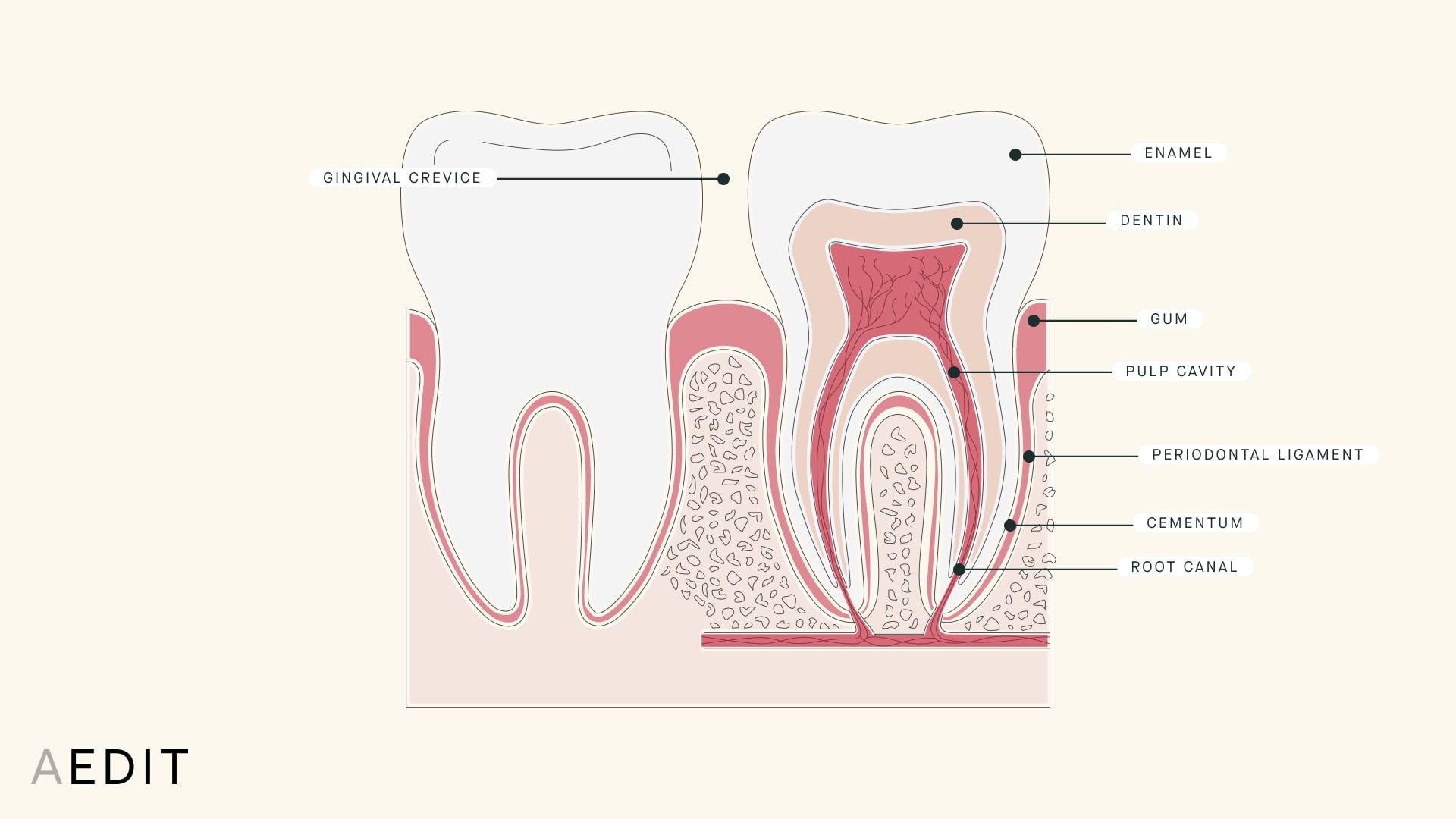
The Skinny
Dental care and dental health may not be a major priority, however, we only get one set of natural teeth. Popular procedures like teeth whitening and dentures populate ads and commercials, but many Americans struggle with lesser known tooth and gum disorders (learn more in our guide to Damaged Tooth & Gum Concerns). Professionals practicing restorative dentistry, cosmetic dentistry, and even regular dental checkups can help identify underlying causes and safe interventions for tooth restoration and gum health.
The Specifics
Who may consider tooth and gum restoration?
Any individual who has noticeable aesthetic disturbance, increased sensitivity or discomfort, or significant tooth or gum damage may consider a restorative procedure. Issues with tooth structure as seen in tooth decay from weakening tooth enamel, a missing tooth, and/or a damaged tooth typically warrant further evaluation. A discussion with a certified medical professional will help to determine what level of intervention is most appropriate for current symptoms and underlying cause.
The Anatomy of the Tooth

What can you expect from a tooth and gum restoration procedures?
Depending on the severity of the condition and the underlying cause, the level of invasiveness will vary. Certain surgical procedures will require prolonged recovery while other outpatient procedures cause only mild discomfort and swelling. Additionally, some procedures require temporary diet modifications to allow for proper recovery and healing.
When should you consider a tooth and gum restoration?
As with most health concerns, the sooner an issue is addressed the better. Identifying and correcting tooth or gum abnormalities in the early stages of disease, decay, or discoloration can limit the intensity of the needed intervention and improve outcomes. Candidates should also consider needed recovery time and activity/diet modifications.
Why should you consider tooth and gum restoration?
A restorative tooth or gum procedure can have aesthetic, functional, and general health benefits. Increased confidence, decreased sensitivity, pain, or damage, and improved oral health accompanies the majority of these procedures. Fixes and corrections made now can have a significant impact on long term oral health.
Professional Tooth & Gum Restoration Procedures
At-Home Tooth & Gum Restoration
For over-the-counter, at-home solutions, a variety of DIY whitening kits and specialized toothpastes exist. White strips, whitening toothpastes, and whitening mouth rinses can have noticeable results at less cost, although regular and repeated treatments are usually needed. Special toothpaste for gum and teeth sensitivity can help with tooth or gum damage that is causing discomfort or pain, however, these are temporary solutions that do not address the underlying cause.
The Takeaway
Nothing beats a natural set of healthy teeth, but, for many individuals, life (and genetics) have other plans. For those struggling with tooth and gum disease that impact quality of life, appearance, and oral health, extensive safe, effective, and trusted restoration options exist to bring back your beautiful, confident smile.





